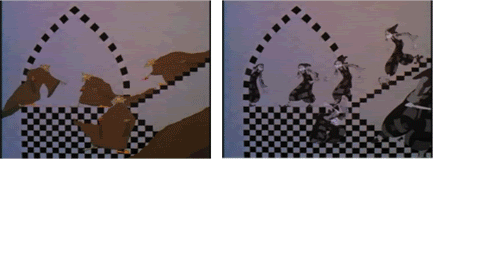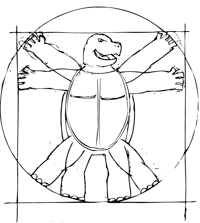So I wasn't sure if the idea for these readings is to post my reaction every time I read something but I might as well begin the semester trying to jump-start a nice full rich blog. Also important to note, one reason I am taking this class to get to know the side of architectural design that has left me with many moments of frustration, confusion, and even humor. Every time someone finds out I am an architecture student, they ask, "so what kind of architect are you?" or "what's your style?", or they'll point out some museum by a starchitect like Gehry or Eisenman and ask my opinion. Quite frankly, my first reaction is to say I don't give a rat's ass about Gehry or Eisenman, and tell them that they've created this aura about contemporary architecture that it is all abstract, curvy and supposed to go everyone else's heads because its so beautiful, making the "architecturally ignorant" scared to criticize for fear that they'll show that they've missed some great higher meaning in the blob shape in front of them. I am looking for the potential in all this study of new architectural design in this class. After reading the first of what I'm sure is a line of Lynn's literature coming at me in the coming semester, I was not sure where to start, so I will go in chronological order as I read it.
Lynn mentions the stasis of architecture as a limitation from our technological and intellectual capacities. I agree with the man about the fact that architecture cannot be expected to be permanent. We can not all built the Greek temples of Paestum, can we? For the less fortunate, we really must consider designing "rather than for permanence, techniques for obsolesce, dismantling, ruination, recycling, and abandonment through time." The new wave of sustainability is quickly catching on to this concept which had been used as memorably early as the acropolis of Athens. I disagree in with Lynn when he talks of buildings being flexible, mutable, and differential. I believe that buildings must be adaptable and able to evolve along with its use but I do not believe that a performance envelope that is adaptable to any use is the answer. Lynn phrases this idea in an very pretty manner, but honestly, it is nothing more than a reiteration of principles set out by the Bauhaus, international style, and its free plan with the addition of more attention to sustainability. If it is evident that a generic building was never as successful as it was made out to be, what reason do we have to restore such an ideal? Part of me can't help believing that its just a convenient excuse for celebrity architects to not have to branch out of their trademark style and apply it to any building type. Take the Bilbao Guggenheim, rearrange the interior, and shrink it down - voila - you have yourself a modern house that can be plopped down in any location in the world and still be as obnoxiously intrusive, "unique", and sells for six times the market value.
Greg Lynn makes mention of architecture's relationship with gravity as one controlled by a "central truth: that buildings stand up vertically". From this he extrapolates an entire article moving toward the idea that space and location can be relative to splines, gravitational pulls, and u,z axes. While it is true that there are variable forces on any structure, we cannot ignore the fact that gravity is pulling us down, there fore we must hold our buildings up, a.k.a. vertically. I think there is a deeper connection to vertical construction to human nature that we stand up, and hold ourselves up from collapsing into the ground because of gravity. It is a force that we constantly fight against, but I have yet seen an economically viable horizontally floating building. Gravity is free, might as well use it and stack things on top of each other. As for the idea of stability, Lynn does tell a truth, orbit and rhythm are perfectly feasible methods of stability. For a building to stand it must not be vertical, but does have to be stable, in equilibrium. The Roman arch comes to mind when thinking of equilibrium. The arch is not stable until the keystone is inserted, and the forces are perfectly pushing the elements against gravity. Cantilevers hold members horizontally, but of course with great mass holding the interior side. The analogy of vectors and orbit holding space bring to the problem an extra dimension that is usually a constant. Gravity is the energy used to hold blocks together when they are piled together, but when it comes to holding things together in any other direction that straight down, nothing has enough gravitational pull or natural free energy to create that pull to cancel out earth's gravity. It is one thing to make something visually appear to float or defy gravity, it is an entire other thing to actually defy gravity.
A big question brought up by Lynn - what to do about the "stigma and fear of releasing control of the design process to software"? Control. I thought this was the main underlying reason all architects become architects. The second definition of architecture in Webster's Dictionary is the "formation or construction resulting from or as if from a conscious act, a unifying or coherent form or structure." Where do we draw the line between having control and not when using a computer? Obviously the computer will not make a critical decision, it will only connect the dots from the information that was ultimately input by a human, so for long is the output from the computer an actual "conscious act"? Lynn goes on to mention that computer output is not organic, it is not nature. I've heard much talk of organic shapes, especially when I visited UPenn just this year. I saw slide after slide of buildings that resemble the cellular conglomerates of plant life in their presentations. There was nothing organic about the design, according to Lynn. If the human cannot create an organic shape, since it is a purely conscious and intentional decision and the computer cannot create an organic shape since it only mathematically calculates a shape from the numbers also intentionally put in, then the blob shape is no more natural or appropriate than a perfect square. I feel like much of the intention behind spline design is to emulate nature, which we often believe uses the most efficient method of design in its creations, but if the blob is not organic or nature, then what is its purpose and advantage over any other traditional shape?
The question of the utility of computer aided design processes ties into Lynn's suggestion of "iterative reduction". Where the architect regains control over the output from the computer is in his power to critically analyze what is in front of him, edit, and reduce to a more concrete and tangible result. There is a dangerously thin line between abstraction and reality when computers are powerful enough to actually give us the information needed to build any ridiculous shape we dare come up with digitally. Digital design can be extremely instrumental in solidifying the central idea of an architectural design. Lynn himself speaks of this thin line toward the end of his chapter, that "in order to bring these technologies from the virtual into the concrete, it is necessary that we first interrogate their abstract structure. Without a detailed understanding of their performance as diagrams and organizational techniques it is impossible to begin a discussion of the translation into architectural form". Amen, brother. That sounds like a pretty good objective for a class named "Advanced Comprehensive Computer Technology in Architecture", I've got to say.



 Lynn tends to imply that new technologies and architectural developments allow us to find a secret dimension of knowledge when it comes to creativity as if we were incomplete beings before these discoveries. I argue that we are still the same beings as in Egyptian two-dimensional times, we merely have more sophisticated tools to stimulate our abstractive creativity. I do not see any superiority in a student's creation of a blob in a modeling program than in a single curvy line of Oscar Niemeyer's. I am in no position to determine whose shape has more meaning, but I would assume that Niemeyer would be much more capable of making that line a tactile experience, an actual functional edifice. The danger of the student's three-dimensional modeling is the natural inclination to make of the design process an additive process, by adding structure, bathrooms, whatnot, rather than a subtractive process, one that will translate that idealized shape more organically into architecture according to human capability instead of digital capability that is lost in translation during the actual human sensual perception.
Lynn tends to imply that new technologies and architectural developments allow us to find a secret dimension of knowledge when it comes to creativity as if we were incomplete beings before these discoveries. I argue that we are still the same beings as in Egyptian two-dimensional times, we merely have more sophisticated tools to stimulate our abstractive creativity. I do not see any superiority in a student's creation of a blob in a modeling program than in a single curvy line of Oscar Niemeyer's. I am in no position to determine whose shape has more meaning, but I would assume that Niemeyer would be much more capable of making that line a tactile experience, an actual functional edifice. The danger of the student's three-dimensional modeling is the natural inclination to make of the design process an additive process, by adding structure, bathrooms, whatnot, rather than a subtractive process, one that will translate that idealized shape more organically into architecture according to human capability instead of digital capability that is lost in translation during the actual human sensual perception. 










